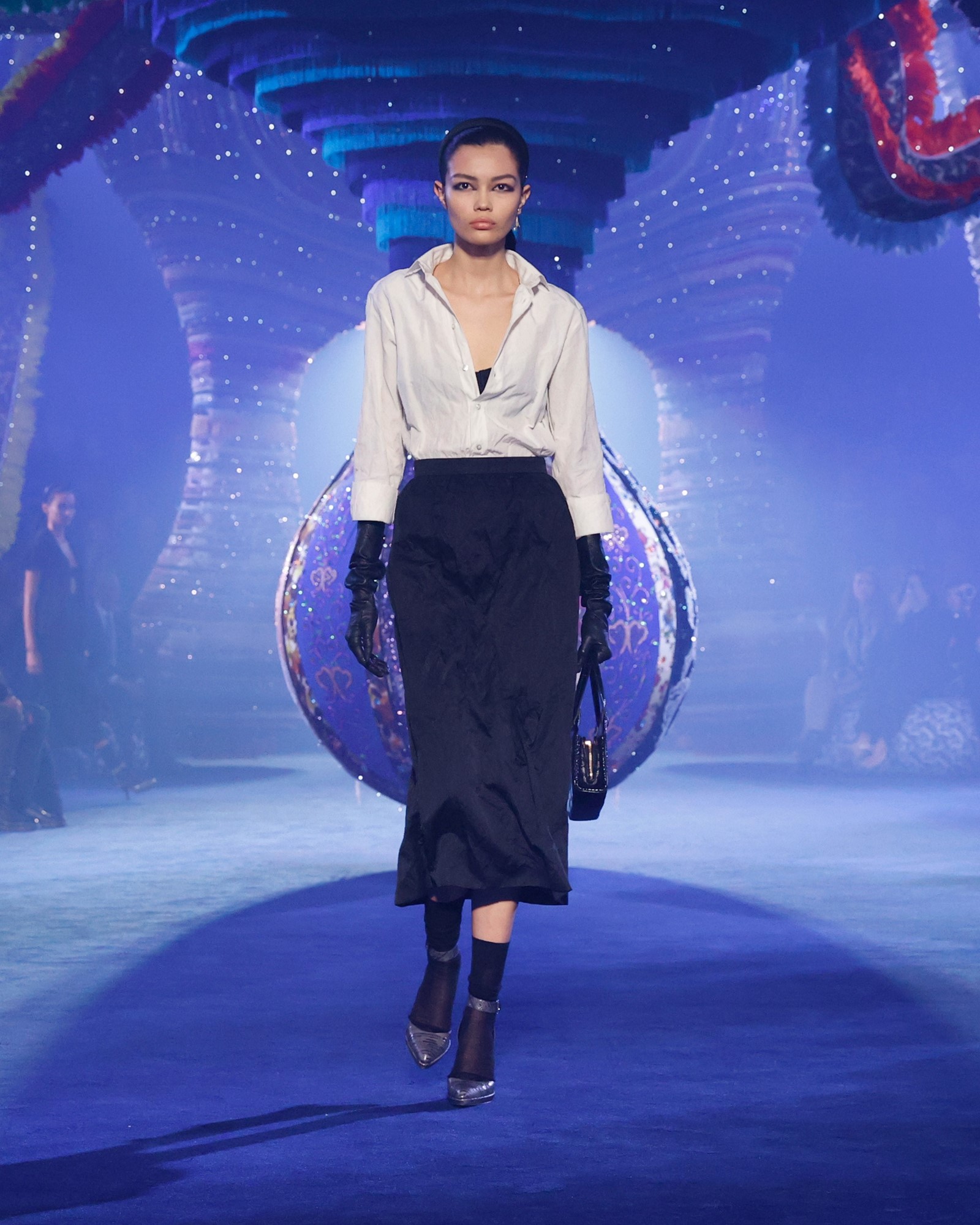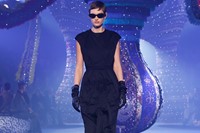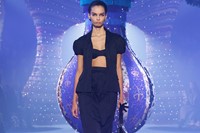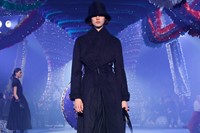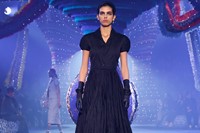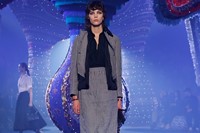“How can we go back to something familiar, but make it different?” That was the task Maria Grazia Chiuri stated she set herself, for her Autumn/Winter 2023 Dior show. It seems to be an idea many designers are grappling with this season – a season which, more than any in recent memory, has been focused around the actuality of clothing, the liveable reality. Which often means lots of black trouser suits, and quite a bit of brown – brown, it seems, is the new black. But Dior is a different matter: the familiar, chez Dior, is the 1950s, and Paris. And that ain’t about trouser suits – even if Chiuri herself was wearing one as she courted press backstage before her Dior show.
So, Dior went back to the 1950s, a decade that is less a heyday for the house and more accurately one whose foundational fashion identity is down to Dior’s shifts and pulls in silhouette. Dior invented the A-line, the H-line, the less-famous Y-line; his swirling full New Look skirts and the slender pencil he proposed as its replacement defined the silhouette. Both were present, reiterated again and again, in Chiuri’s latest show.
“You have to restart from the patrimony,” Chiuri explained, sat before a moodboard splattered with images of Dior’s storied past. “Everything started from the idea of exploring the most important moment for the company.” Hence those reference images span from the bladed back of a 1948 houndstooth jacket called ‘Aventure’ through to a shadow of the future, the black crocodile blouson designed by Yves Saint Laurent for his final Dior collection of Autumn/Winter 1960. That collection was colloquialised as the ’Beat’ collection, inspired as it was by Paris’ Left Bank beatniks, and his design was the first black leather jacket ever to appear in haute couture. That’s pretty major history, right there.
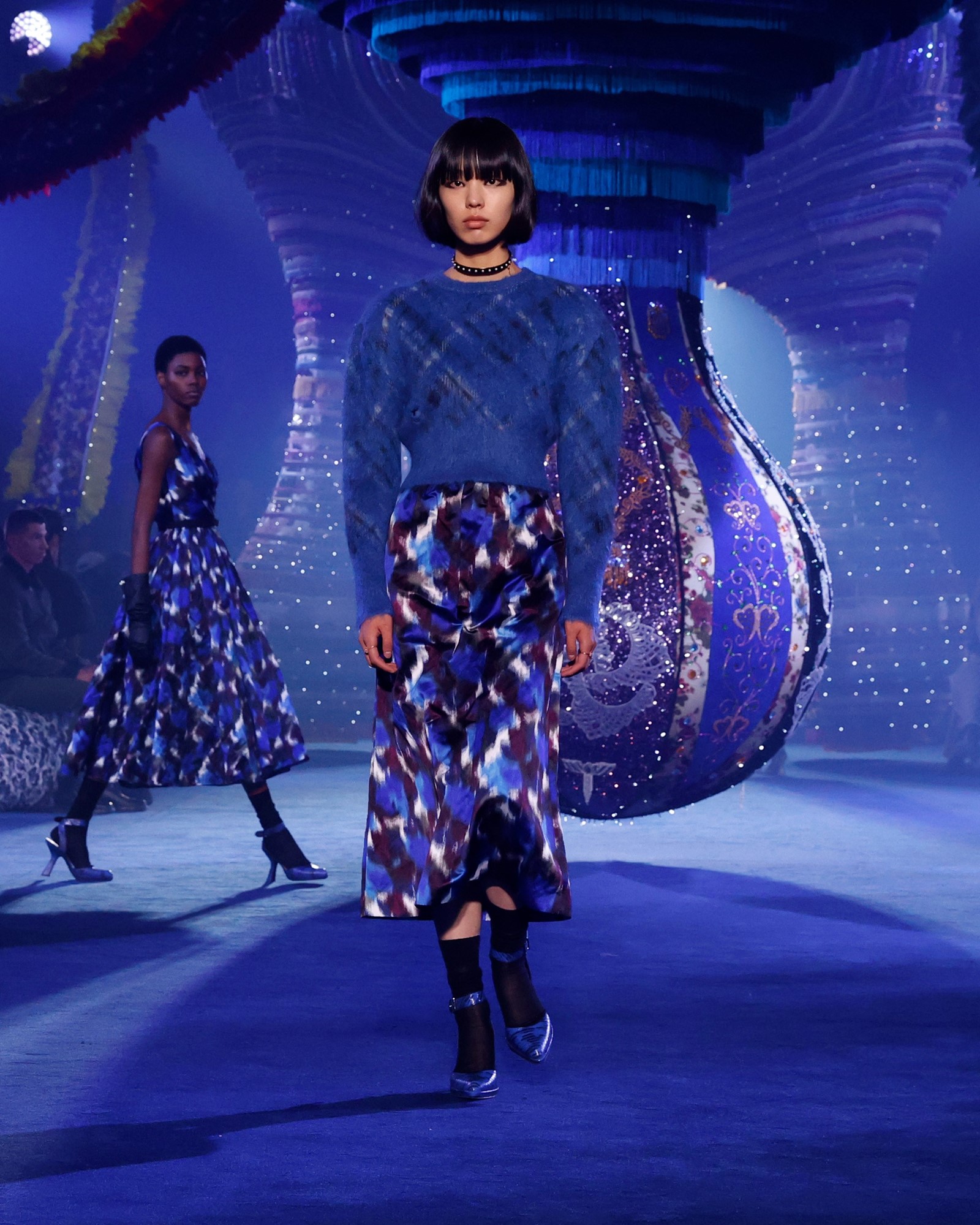

“I wanted to give the collection a different point of view about the 50s,” stated Chiuri – and, indeed, rather than referring to specific Dior designs, she looked to women who defined the period for her, and also the house: the famous French figures of Juliette Gréco and Edith Piaf, and Monsieur Dior’s sister, Catherine. “His first sketch when he was 15 years old was devoted to her,” recounts Chiuri. She calls these women “an embodied perspective”, which gives her “a more real image of fashion”. So rather than identikit reproduction of the greatest hits of Dior, Chiuri’s versions were lived-in, even slept-in, with creases and crumples and twists. The sculptural back of ‘Aventure’ was softened; Saint Laurent’s blouson interpreted in cuddly shearling. “They’re more warm, because of their imperfections,” Chiuri said – which is, perhaps, her way of shifting the perfection of both Dior and the archetypal Parisienne to a new place.
That said, it was also a big old love affair with Paris, ideological and literal. The former came in the whiff of Saint Germain about the inky pencil dresses and socks and slingback, the chicness of pulled-together looks, handbag nestled in the crook of the arm, that semaphores postwar Parisienne; the latter in stuff like a print of a map of Paris (Dior is included among national monuments), and dangling charms of the Tour Eiffel and Arc de Triomphe. And Paris actually does mean Dior, as that map indicates. “At the beginning, I didn’t understand all this attention on Dior,” laughs Chiuri. “But this brand is linked to the city, Monsieur Dior has a different relationship to Paris.” So the greys reminded you of the steely sky hanging over Paris in February, glinting jet embroideries were like rain on tarmac. Which was precisely the intention. “This is the most French collection that I made in my life,” Chiuri stated. It was also her strongest.
